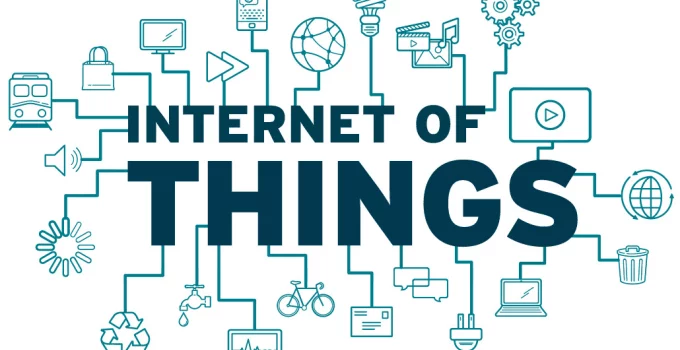
Introduction
Netflix is known for offering a huge range of movies. Whether you’re into thrilling action, touching drama, or funny comedies, there’s always something for everyone. In this article, we’ll look at the 10 best new movies on Netflix. These movies are exciting, emotional, and full of surprises. Let’s dive in!
Top 10 New Movies on Netflix 2025
1. The Killer

Genre: Thriller, Action
Director: David Fincher
Cast: Michael Fassbender, Tilda Swinton, Charles Parnell
The Killer is a fast-paced thriller about a hitman whose life starts to fall apart. The movie keeps you on the edge of your seat with action and suspense. Michael Fassbender’s performance is gripping, making it a must-watch for fans of intense movies.
2. Rustin

Genre: Drama, Historical
Director: George C. Wolfe
Cast: Colman Domingo, Chris Rock, Audra McDonald
Rustin tells the story of Bayard Rustin, an important but often overlooked civil rights leader. The movie highlights his role in the civil rights movement, and Colman Domingo gives an amazing performance. It’s an inspiring film that will make you think about history and equality.
3. The Mother

Genre: Action, Thriller
Director: Niki Caro
Cast: Jennifer Lopez, Joseph Fiennes, Omari Hardwick
The Mother is about a former assassin (played by Jennifer Lopez) who comes out of hiding to protect her daughter. This movie mixes action with heartwarming moments, showing the strong bond between a mother and her child. If you like action-packed movies, this is for you!
4. The Pale Blue Eye

Genre: Mystery, Horror
Director: Scott Cooper
Cast: Christian Bale, Harry Melling, Gillian Anderson
In The Pale Blue Eye, a detective (played by Christian Bale) investigates strange deaths at a military school. The film has a creepy and mysterious atmosphere that will keep you hooked. If you enjoy dark and spooky stories, this one’s for you.
5. They Cloned Tyrone

Genre: Sci-Fi, Comedy
Director: Juel Taylor
Cast: John Boyega, Teyonah Parris, Jamie Foxx
This funny sci-fi movie follows three friends who discover a government conspiracy involving clones. It’s a mix of comedy and science fiction, with a clever message about society. John Boyega and Jamie Foxx bring plenty of humor and charm to the film.
6. Chicken Run: Dawn of the Nugget

Genre: Animation, Family
Director: Sam Fell
Cast: Thandiwe Newton, Zachary Levi, Bella Ramsey
Chicken Run: Dawn of the Nugget is a fun animated movie for the whole family. The chickens are back, and they must stop a new threat that could put them all in danger. It’s a heartwarming movie with lots of laughs, perfect for kids and adults alike.
7. The Mother of All Lies

Genre: Drama, Thriller
Director: Anissa Daoud
Cast: Hafsia Herzi, Amine Ennaji, Mariam Ziani
This French thriller is about family secrets. A woman uncovers painful truths about her past while trying to understand her family. The movie has a lot of emotional depth and keeps you guessing until the end. It’s perfect for fans of intense family dramas.
8. A Haunting in Venice

Genre: Mystery, Thriller
Director: Kenneth Branagh
Cast: Kenneth Branagh, Michelle Yeoh, Tina Fey
Based on an Agatha Christie novel, A Haunting in Venice is a spooky mystery. Detective Hercule Poirot investigates a mysterious death during a Halloween seance. The movie has a dark, mysterious vibe and is perfect for fans of thrillers and mysteries.
9. All Quiet on the Western Front

Genre: War, Drama
Director: Edward Berger
Cast: Felix Kammerer, Albrecht Schuch, Daniel Brühl
This film tells the story of World War I from the perspective of young soldiers. All Quiet on the Western Front is a powerful movie about the horrors of war. It’s emotional and thought-provoking, making it one of the best war films of recent years.
10. The Devil to Pay

Genre: Horror, Thriller
Director: Lane Skye, Ruckus Skye
Cast: Danielle Deadwyler, J. Alphonse Nicholson, Will Hochman
The Devil to Pay is a dark thriller set in the American South. A young woman has to make a dangerous deal to save her family. It’s a tense, spooky movie with strong performances and a gripping storyline. Fans of horror and thrillers will enjoy this one.
How Netflix Changed Movie Watching
Before Netflix, people had to go to movie theaters to watch new films or wait for them to be available on DVD. Netflix changed that by allowing people to stream movies directly to their TVs, computers, or phones. This made it easier for everyone to watch their favorite movies at home, saving time and money. Now, people don’t need to wait for DVDs or go out to watch a movie, making movie-watching more convenient than ever before.
Netflix’s Original Movies and Shows

One of the most exciting things Netflix has done is creating its own movies and shows. These original movies are exclusive to Netflix, meaning you can only watch them on the platform. Netflix has made big hits like Stranger Things, The Witcher, and Red Notice. By making original content, Netflix has attracted millions of subscribers who want to see something new and unique. This has made Netflix a leader in entertainment.
Netflix’s Impact on Movie Theaters
As more people watch movies on Netflix, movie theaters have seen fewer visitors. Many people now prefer the comfort of home over going to a theater. This has led to some changes in the movie industry, with more films being released directly to Netflix instead of theaters. While this shift has affected theaters, it has allowed Netflix to become a big player in the entertainment world.
Netflix’s Commitment to Diversity in Movies

Netflix is known for supporting diversity in its movies. It offers films from many different countries, cultures, and backgrounds. This allows viewers to enjoy movies that represent a wide variety of experiences. Whether it’s a story from Africa, Asia, or Latin America, Netflix gives people the opportunity to watch films that might not have been available to them before. This commitment to diversity helps bring the world’s stories together in one place.
Easy Access to Movie Genres
One of the best things about Netflix is how easy it is to find movies in different genres. If you’re in the mood for a comedy, a thriller, or even a documentary, you can simply search or browse through Netflix’s categories. It makes exploring new movies fun and simple. Netflix even organizes its movies into easy-to-find lists, like “Top Picks” or “Trending Now,” so you never have to search for long.
Netflix’s Movie Releases and Updates

Netflix frequently adds new movies to its library, keeping the content fresh and exciting. Every month, new films are released, giving subscribers something new to look forward to. Netflix also updates its older content, improving the quality of older movies and adding new features, so the viewing experience stays current. This constant flow of new content helps keep Netflix interesting and engaging for its users.
Global Reach of Netflix Movies
Netflix is available in over 190 countries, allowing people all around the world to enjoy movies and TV shows. This global reach means that a movie can be shared with millions of viewers, no matter where they live. Netflix helps movies reach audiences in different languages by offering subtitles and dubbing. This has made Netflix a global platform where different cultures and ideas can come together through film.
The Challenges of Netflix Movies
While Netflix is a major player in the entertainment industry, it faces challenges. One challenge is competition. Other streaming platforms, like Amazon Prime Video and Disney+, are offering similar content, which makes it harder for Netflix to stand out. Another challenge is the rising cost of producing original films, which can affect the quality of content. Additionally, some viewers face issues with internet speeds, making it hard for them to enjoy movies in high quality.
The Future of Netflix Movies

The future of Netflix movies looks bright, with more original content on the way. As technology improves, Netflix may continue to offer even better viewing experiences, like 4K streaming and virtual reality movies. With more people choosing streaming over traditional cable TV, Netflix will likely keep growing. The platform may also explore new ways to interact with viewers, such as through live-streamed events or interactive movies.
Key Highlights of the Best New Movies on Netflix
| Movie Title | Genre | Director | Lead Actor(s) | Key Highlights |
|---|---|---|---|---|
| The Killer | Thriller, Action | David Fincher | Michael Fassbender | Fast-paced action, intense performance |
| Rustin | Drama, Historical | George C. Wolfe | Colman Domingo | Inspiring story about civil rights |
| The Mother | Action, Thriller | Niki Caro | Jennifer Lopez | Strong mother-daughter bond, exciting action |
| The Pale Blue Eye | Mystery, Horror | Scott Cooper | Christian Bale | Spooky, dark mystery with great acting |
| They Cloned Tyrone | Sci-Fi, Comedy | Juel Taylor | John Boyega | Fun sci-fi with a clever message |
| Chicken Run: Dawn of the Nugget | Animation, Family | Sam Fell | Thandiwe Newton | Family-friendly fun with plenty of adventure |
| The Mother of All Lies | Drama, Thriller | Anissa Daoud | Hafsia Herzi | Family secrets, emotional depth |
| A Haunting in Venice | Mystery, Thriller | Kenneth Branagh | Kenneth Branagh | Mysterious, spooky, based on Agatha Christie |
| All Quiet on the Western Front | War, Drama | Edward Berger | Felix Kammerer | Powerful war film, emotional and thought-provoking |
| The Devil to Pay | Horror, Thriller | Lane Skye, Ruckus Skye | Danielle Deadwyler | Dark, tense thriller with supernatural themes |
Comparing the Movies: Genre, Themes, and Feel
| Movie Title | Genre | Main Theme | Emotional Impact | Ideal Audience |
|---|---|---|---|---|
| The Killer | Thriller, Action | Assassins, Identity | Suspenseful, Intense | Action movie fans |
| Rustin | Drama, Historical | Civil Rights | Inspirational, Moving | History lovers |
| The Mother | Action, Thriller | Motherhood, Protection | Emotional, Exciting | Action fans, Families |
| The Pale Blue Eye | Mystery, Horror | Mystery, Death | Creepy, Suspenseful | Mystery lovers |
| They Cloned Tyrone | Sci-Fi, Comedy | Identity, Conspiracy | Fun, Thoughtful | Sci-fi and comedy fans |
| Chicken Run: Dawn of the Nugget | Animation, Family | Freedom, Adventure | Uplifting, Fun | Families, Kids |
| The Mother of All Lies | Drama, Thriller | Family Secrets | Emotional, Intense | Drama fans |
| A Haunting in Venice | Mystery, Thriller | Murder Mystery, Ghosts | Spooky, Intriguing | Mystery & Thriller fans |
| All Quiet on the Western Front | War, Drama | War, Humanity | Heartbreaking, Deep | War film fans |
| The Devil to Pay | Horror, Thriller | Family, Supernatural | Dark, Tense | Horror lovers |
Conclusion
Netflix has changed the way people watch movies, offering a huge variety of films, easy access on multiple devices, and a smooth, ad-free experience. It has become a leader in the entertainment industry by producing original content, supporting diverse filmmakers, and giving viewers the power to choose what and when they watch. With its growing library and global reach, Netflix is sure to remain a top choice for movie lovers in the future.

















































